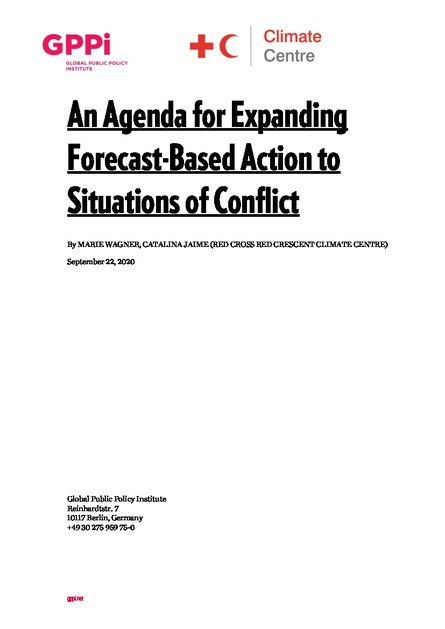
Forecast-based humanitarian action is increasingly important. Thanks to timely warnings about hydro-meteorological hazards such as floods and storms, a growing number of humanitarian actors are able to start their work early before a predicted disaster hits – thus preventing the loss of many more lives and livelihoods than purely reactive humanitarian action ever could. There also is growing interest among donors to fund such actions based on scientific forecasts of hydro-meteorological hazards – but these are not the only type of humanitarian crisis. This paper argues that Forecast-based Action (FbA) could be expanded to situations of conflict and outlines practical considerations for how to approach this complex endeavor.
The paper first provides an overview of the basis of FbA, how and in what situations it is currently used, and which different actors are actively involved. We then describe a framework of key building blocks that have allowed for FbA to be applied to hydro-meteorological hazards and examine how these building blocks could be used to expand the approach to other types of crises. They include: 1) data/forecasts and decision-making processes; 2) pre-agreed actions; 3) funding mechanisms; 4) champions; and 5) delivery channels.